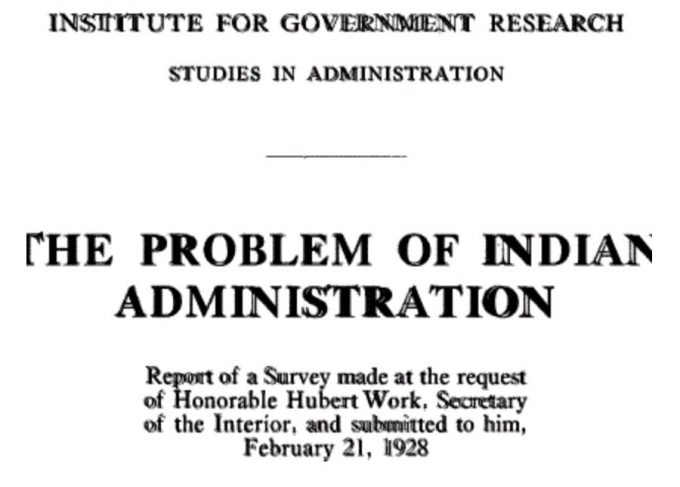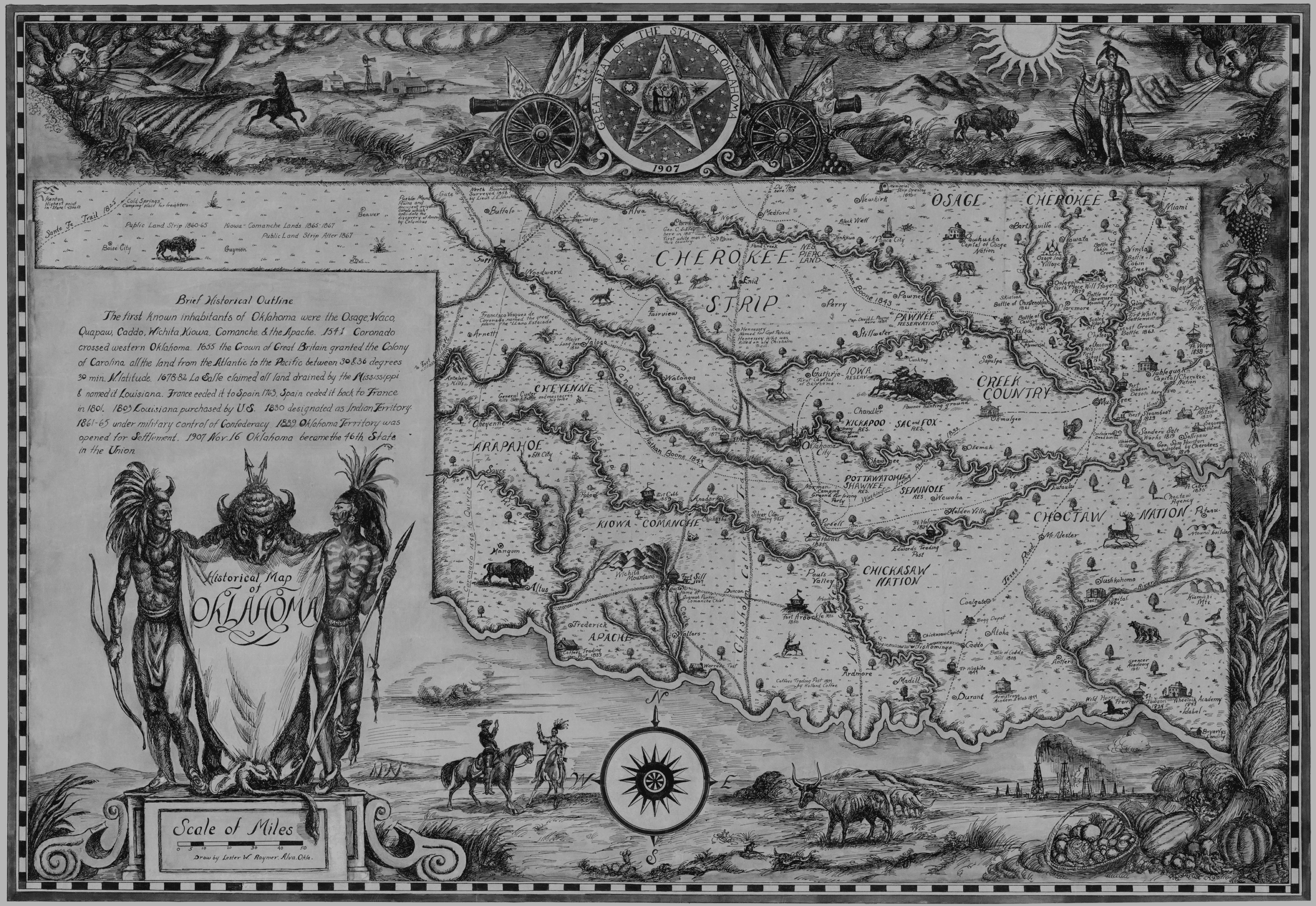1928
The Meriam Report
Out of sight, out of mind. For a majority of Americans that is where Native Americans have largely been and, for the most part, the non-Indian population has been perfectly happy to keep it that way. When Lewis Meriam’s report, titled The Problem of Indian Administration, was published in 1928, it shone a very bright spotlight on the conditions facing American Indians at the time. The realities that emerged were dark.
Authorized by the Institute for Government Research (IGR) at the request of Secretary of the Interior Hubert Work, a research commission led by Meriam visited 95 reservations in 23 states over a seven-month period. The survey team consisted of 10 experts in a variety of fields, including sociology, education, history, law, agriculture, health, family life and women’s activities, and research methods. To better understand the challenges facing Indian people, members of the team visited boarding schools, health clinics, community centers, and homes of the tribal citizens where they spoke directly with the people. Their observations were stark:
On health: “…taken as a whole, practically every activity undertaken by the national government for the promotion of the health of the Indians is below a reasonable standard of efficiency.” Regarding education: “The survey staff finds itself obligated to say frankly and unequivocally that the provisions for the care of Indian children in boarding schools are grossly inadequate.”
About general economic conditions in Indian communities: “In justice to the Indians, it should be said that many of them are living on lands from which a trained and experienced white man could scarcely wrest a reasonable living. In some instances, the land originally set apart for the Indians was of little value for agricultural operations other than grazing.”
About family and community: “The fundamental importance of community life, like that of family life, has apparently never been recognized by the government in the treatment of the Indians… The forcible removal of whole tribes to very different physical environments resulting in the disruption of economic life, the detention of large groups as prisoners of war for long periods, the common discouragement of Indian leadership on the reservations and in the government schools, the disrespect of white employees for Native customs and ceremonies, and the assumption on the part of teachers and others in the schools that all Indian ways are bad ways, have tended to break down native social structure.”
The report concluded that federal policies had made it “difficult for Indigenous peoples to create a meaningful sense of life and community. This is a result of the disrespect of Indigenous culture in addition to the lack of necessary funding to execute programs properly.”

Image: Wikimedia Commons
The 872-page Meriam Report was the first general study of Indian conditions since the 1850s, and it revealed just how extensively the federal government’s policies had oppressed American Indian people for generations. The report strongly repudiated the philosophy of Indian policy which had prevailed since 1871, an ideology which had been guided by the belief that only through private property could Indians prosper, and that economic development should be based on small, privately owned family farms. According to the report, “It almost seems as if the government assumed that some magic in individual ownership of property would in itself prove an educational civilizing factor, but unfortunately this policy has for the most part operated in the opposite direction”
By combining a compelling narrative with extensive use of statistics, the most significant and influential effect of the Meriam Report was from its strong criticism of the Dawes Act of 1887 (also known as the General Allotment Act) which had sought to break up the communal Indian land by allocating allotments to individual Indian households, encouraging families to undertake European-American model of subsistence farming. The overall conditions the survey team had seen in boarding schools and on reservations made it clear that these beliefs produced tragic consequences. “Several past policies adopted by the government in dealing with the Indians,” the authors wrote, “have been of a type which, if long continued, would tend to pauperize any race.”
“Many are living on land from which a white man could scarcely wrest a reasonable living.”
Following publication of the report’s attack on land allotment, there was a nearly immediate decline in the issuance of allotted lands. In the four fiscal years prior to the initiation of the study (1922 to 1926), approximately 10,000 Native Americans were allotted over three million acres. During the following four years (1929 to 1932), less than 500,000 acres were allotted to just over 2,800 Natives. Although the Meriam Report steered clear of recommending that allotment be abandoned altogether, within five years the policy of allotment was scrapped. On June 18, 1934, President Franklin D. Roosevelt signed the Indian Reorganization Act into law, which ended allotment and permitted tribes to organize their own governments and incorporate trust lands communally.
Overall, the Meriam Report set the stage for a new era in Indian policy, a period during which policy could be based on actual data rather than ideological or theological fantasies. It strongly influenced succeeding policies in land allotment, education, and health care. Although there has certainly been progress in many forms, subsequent policies and their impact make it obvious that precious few lessons were learned. If a similar study were conducted today, one suspects the conclusions reached would not be a whole lot different.


